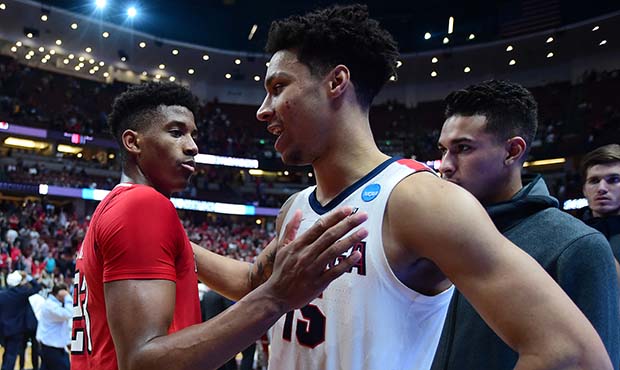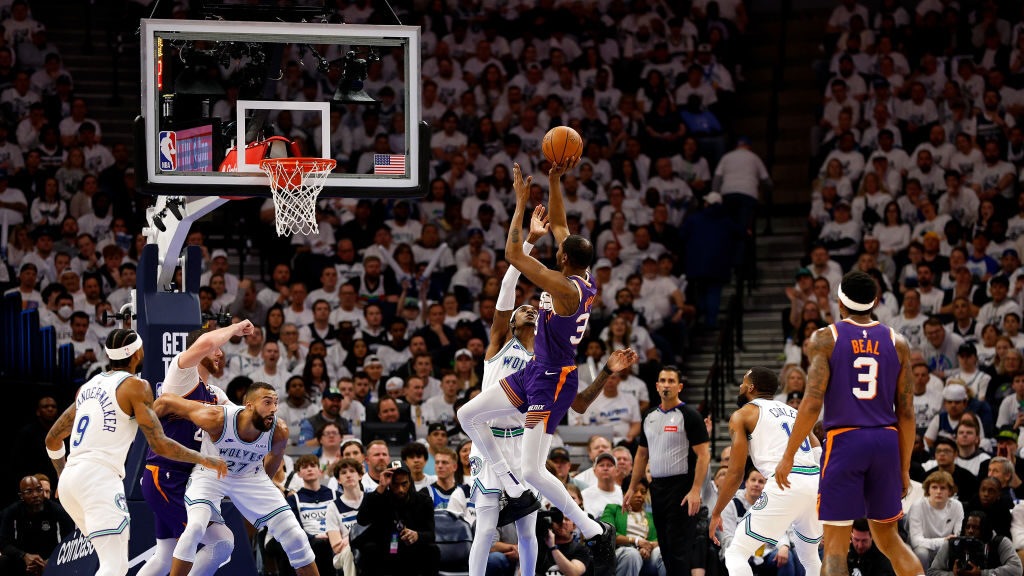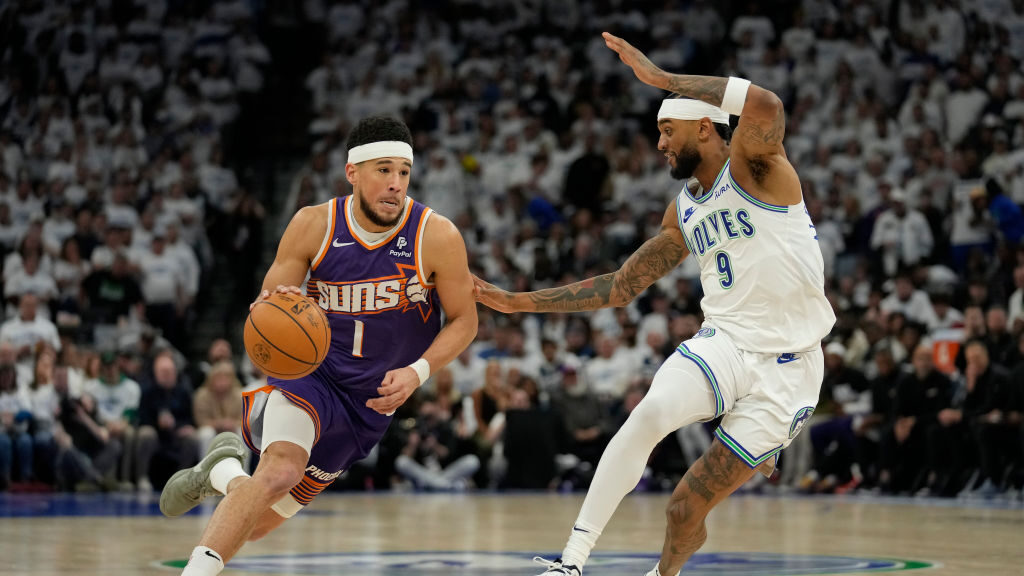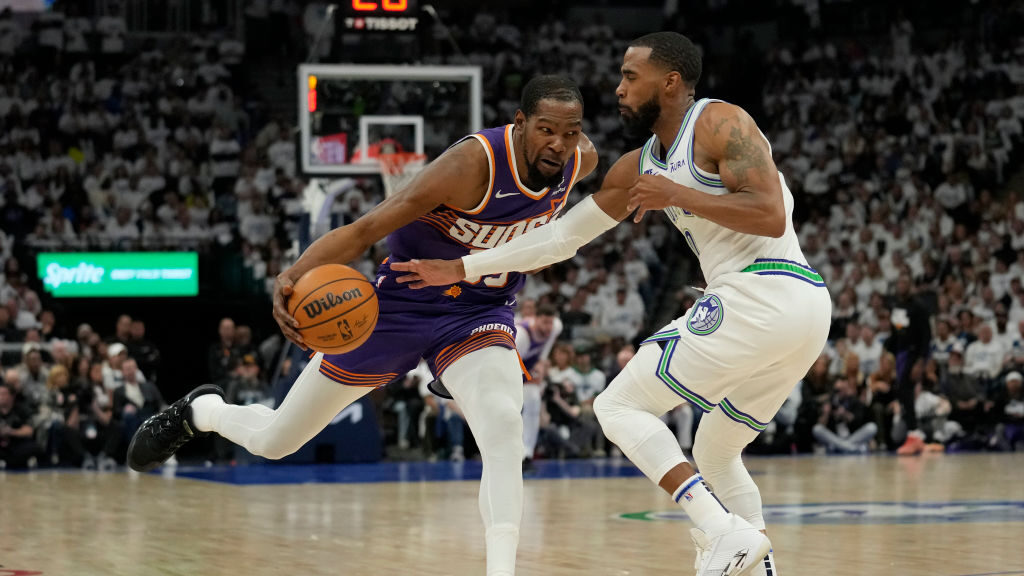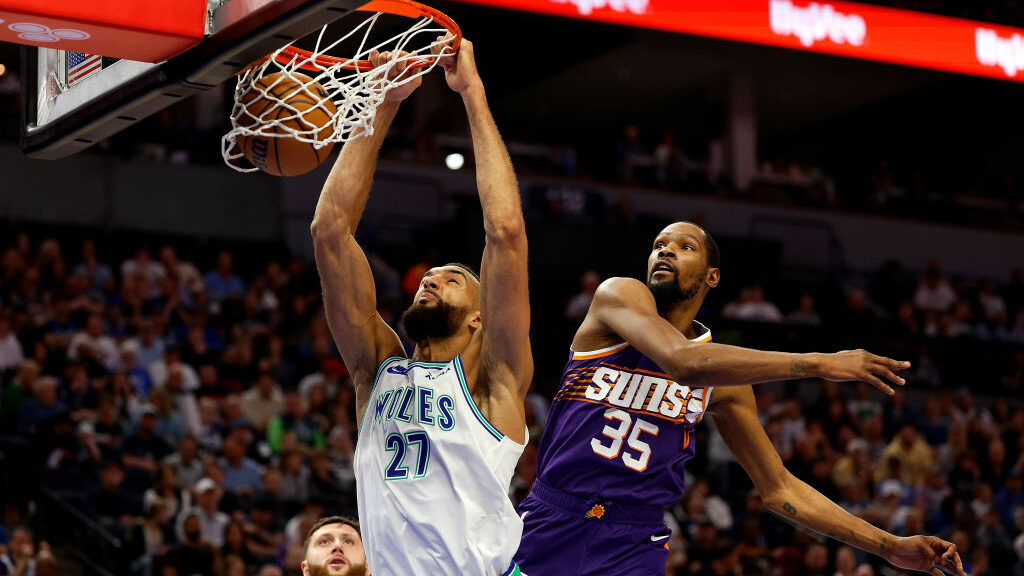Suns face difficult, unpredictable No. 6 spot in 2019 NBA Draft
May 15, 2019, 3:00 PM

(Getty Images)
(Getty Images)
Let’s start off right away by saying that sucked. The 2019 NBA Draft Lottery was dramatic but not a good time for the Phoenix Suns.
In what we can only foresee from a pre-draft stage, the national consensus is that this is a three-player draft. So, naturally, the Suns went from the third-best odds all the way to the sixth spot.
There are some immediate ramifications to sort through, the first of which should take a gander at the Suns’ need for a point guard and how that changes based on the lottery fallout. Luckily, your friend and mine Kevin Zimmerman ran through some of that and names to keep an eye on with the trade market.
Now let’s focus strictly on the names in this draft and why the specifics of the class add up to an unpredictable five-week leadup.
Zion Williamson, Ja Morant and R.J. Barrett, barring some red flags coming up, will all go in the top-five and not be available for the Suns.
The fascinating element of this draft, a bad one, is that it’s going to become the wild west once Barrett and Morant are off the board.
While I am part of a strong contingent that believes Texas Tech wing Jarrett Culver is separated from that muck and right next to Barrett and Morant in a solidified top-4, the post-lottery draft intel at this time says otherwise. He’s lumped in with the likes of Vanderbilt point guard Darius Garland, Virginia forward De’Andre Hunter and North Carolina guard Coby White.
But the separation between that small group and the one below them isn’t significant, at all. Overseas forward Sekou Doumbouya, Duke wing Cam Reddish or USC guard Kevin Porter Jr. are a few guys who could jump into that group based on how stocks rise through the combine, interview and workout stages of the process.
So, while 98.7 FM Arizona’s Sports Station’s John Gambadoro reports Culver, Garland and White are three early names to watch for the Suns, this isn’t a traditional pre-draft outlook where we can safely lock those guys in for the 5-8 range of the draft.
For example, at this stage last year there was a clear divide of Marvin Bagley III, Jaren Jackson Jr., Trae Young, Mohamed Bamba, Wendell Carter Jr. and Michael Porter Jr. rounding out a definitive top-8 after Deandre Ayton and Luka Doncic. That, minus Porter’s injury concerns, played out.
But if you look at the next tier, Kevin Knox was selected after both Mikal and Miles Bridges, something just about no one had in mid-May. But Knox was a workout stud and things changed.
That’s the “range” we are in as soon as the Los Angeles Lakers (or whoever picks there) are on the clock at four. Maybe someone like Culver or Garland separates themselves or a name like North Carolina wing Nassir Little or Gonzaga forward Rui Hachimura surges up draft boards over the next few weeks. Who knows?!
What we know for the moment is the guys in this “range” and it adds up to another interesting decision for the Suns to make.
If the Suns want to lock in strictly on a player that can contribute with a specific skill set, Culver and Hunter are the two names to spotlight. That seems like the safest bet right now given how much they want to improve next year.
Standing at just under 6-foot-7, Culver’s a secondary ball-handler who sees the floor well enough to make the right reads when his scoring options don’t open. It’s really important to start there with him because he’s not going to be able to create his own shot consistently enough right away.
As you can see in the first video below, some of these passes come out of situations where he was unable to get space.
Adding onto my last tweet (https://t.co/0Sog3sAlzv)
Jarrett Culver also showed his passing & vision today. He finished w/ 7 AST & usee his size to pass over the top of his defenders. He also did a great job of getting into the paint & passing when the help defense committed pic.twitter.com/tLcjcAqWwB— Zach Milner (@ZachMilner13) March 22, 2019
His best current trait, though, is how he finishes around the rim and having just enough of a reliable handle to get in that area at the moment.
Jarrett Culver was scoreless in the first half vs WVU last week with foul trouble, but ended up scoring 18 in the second half. Had a couple of impressive ISO possessions. pic.twitter.com/kQYJN2bfes
— NBADraftReports (@NBADraftReports) January 6, 2019
His shot off the dribble, and at a stand-still, is still growing at this stage and the defense is adequate.
But overall, Culver’s got basketball skills and a physical profile teams want on the wing. The Suns don’t have a player like him at the moment given Josh Jackson’s stagnant growth as a slasher and Kelly Oubre Jr.’s tunnel vision when he attacks. He would offer a different type of patient, steady ball-handler option on the wing with upside for more.
Hunter’s a lot more cut and dry. He’s a great defender, offering more bulk than the speed Mikal Bridges gives as a more capable body defending guards.
Working through De'Andre Hunter's NBA Draft scouting video. Incredible feet for a guy 6'8, 230 pounds. Really sound technique guarding the perimeter. Plug and play defender who continues to make strides offensively/as a shooter. High floor. pic.twitter.com/E8eNpjQgue
— Mike Schmitz (@Mike_Schmitz) April 18, 2019
While the hope that there’s some untapped potential for Hunter as a scorer slammed to a halt in the NCAA Tournament, he 43.8% from deep and 78.3% at the foul line suggest he’s going to be a somewhat reliable shooter. That’s one of those 3-and-D fellas you hear about all the time.
The way to think about Hunter’s defensive value is he’s similar to Toronto’s OG Anunoby in that he provides the type of size you’d hope to put on the likes of Kevin Durant, Kawhi Leonard, Paul George, etc. Can he stop these guys? Well, no one can. But having a legitimate option to send on primary perimeter scorers on the 6-foot-7 to 6-foot-10 spectrum is valuable as those guys continue to come into the league.
But the problem you have already thought of is assuming Oubre re-signs, Culver or Hunter would be the fifth wing on the depth chart.
Yes, a logical conclusion for the Suns’ offseason is they move Jackson and/or T.J. Warren, but that’s still drafting a guy who will surely play behind Devin Booker, Bridges and Oubre for the foreseeable future if that plays out.
How tempting does the point guard potential of Garland or White allure the Suns sitting at six if one or both are available?
We will have more in-depth pieces on both of those names later on but the main point on Garland and White is their biggest weaknesses are, well, being point guards.
Garland’s floor vision and passing are uninspiring. Similarly, there’s a question of White if he can be a primary ball-handler. At the very minimum, you need to have a real good pitch ready to convince me on both being a lead guard in the future.
And notice “in the future.” Both are only 19 years old, and if they are playing next season, can they be trusted to run the offense off the bench? Do you need to play them with another ball-handler? Probably, right?
That’s the frustrating push-and-shove debate the Suns will have in their draft room for the coming weeks.
They have a need to address at point guard and there will likely be one name there that can fill it, but there’s a serious concern as to how they fit in. There’s also likely going to be one name on the wing that can help them right away, but there has to be a judgment call made by them as to how much that actually means to them.
At what point do they stare at that conundrum long enough, take a quick glance at Gonzaga big Brandon Clarke and say, “Screw it. Not sure if we can play him at the 4 or the 5, but that dude’s a good basketball player.”
Clarke’s an enigma. He weighs under 210 pounds and is only at 6-foot-8 with a worrisome 6-foot-8 wingspan.
He can also do this.
DON’T TRY THAT ON BRANDON CLARKE 🚫pic.twitter.com/fYexzlrVmX
— NCAA March Madness (@marchmadness) December 9, 2018
Armed with some nice touch, he can finish just about everything.
Brandon Clarke's touch around the basket is one of the best in the country. Yesterday, Clarke finished with 36 points (15-18 FG, 6-8 FT) against Baylor and put his touch on display.
Here are a few examples of Clarke's soft touch pic.twitter.com/W1A1vH9rJ9
— Zach Milner (@ZachMilner13) March 24, 2019
Because of his athleticism and smarts, he’s a very well-balanced defensive player. That, and being too small and thin to play as a primary rim protector, makes him more suited as a power forward. Erm, if you can get past him weighing four pounds less than Kyler Murray.
The issue is Clarke can’t shoot right now. In fact, he didn’t even shoot three-pointers in college. He attempted a whopping 15 in his college career.
Hey, maybe he can in the future. Some people are alarmingly confident that he will because he drastically altered his shooting form and put up good numbers from the mid-range last season.
But you have to evaluate him for what he is right now, and that’s a big who needs to play in a specific spot with a specific partner to have his value jump from big man energy off the bench to superstar role player. That’s where the Deandre Ayton propositions of the developing range on his jumper begin, something we will touch on in the future.
For now, that’s where we’re at. Clarke could very well be the Suns’ best option at six but you need to optimize a whole lot for him and there’s not really an opening for him at the moment. Phoenix could also clog up its log jam even further on the wing with Culver/Hunter or take a gamble on a point guard’s upside with Garland/White.
That, along with trade possibilities, makes this quite the first draft for general manager James Jones to tackle.


